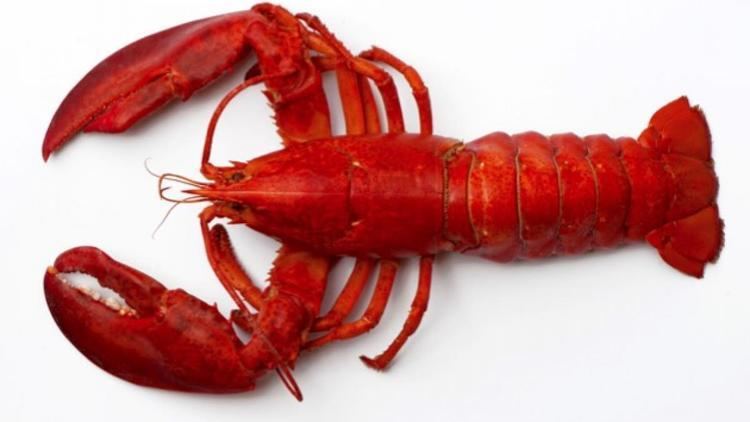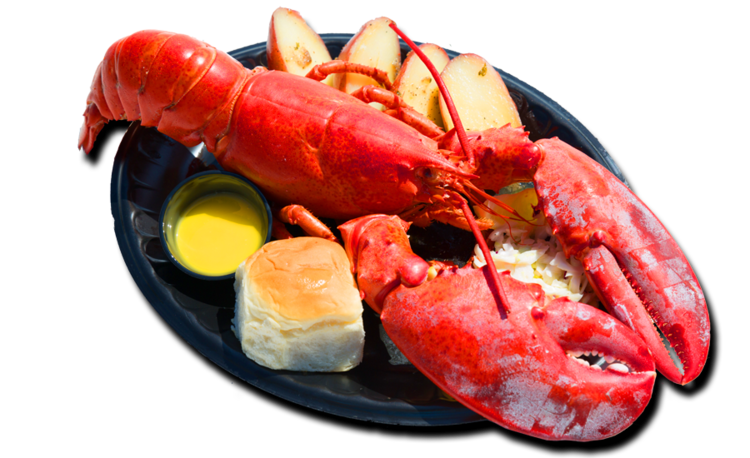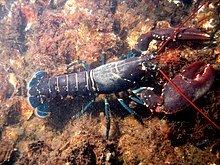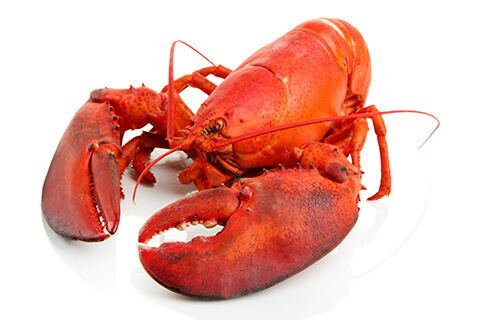Infraorder Astacidea | ||
 | ||
Similar Shrimp and prawn as, Crab meat, Crab, Astacoidea, Prawn | ||
Breeding lobsters at war blue planet bbc earth
Lobsters comprise a family (Nephropidae, sometimes also Homaridae) of large marine crustaceans.
Contents
- Breeding lobsters at war blue planet bbc earth
- 5 weird lobster facts what the stuff
- Description
- Longevity
- Ecology
- As food
- History
- Grading
- Welfare
- Fishery and aquaculture
- Species
- References
They have long bodies with muscular tails, and live in crevices or burrows on the sea floor. Three of their five pairs of legs have claws, including the first pair, which are usually much larger than the others. Highly prized as seafood, lobsters are economically important, and are often one of the most profitable commodities in coastal areas they populate. Commercially important species include two species of Homarus from the northern Atlantic Ocean, and scampi – the Northern Hemisphere genus Nephrops and the Southern Hemisphere genus Metanephrops. Although several other groups of crustaceans have the word "lobster" in their names, the unqualified term "lobster" generally refers to the clawed lobsters of the family Nephropidae. Clawed lobsters are not closely related to spiny lobsters or slipper lobsters, which have no claws (chelae), or to squat lobsters. The closest living relatives of clawed lobsters are the reef lobsters and the three families of freshwater crayfish.

5 weird lobster facts what the stuff
Description

Lobsters are invertebrates with a hard protective exoskeleton. Like most arthropods, lobsters must moult to grow, which leaves them vulnerable. During the moulting process, several species change colour. Lobsters have 10 walking legs; the front three pairs bear claws, the first of which are larger than the others. Although lobsters are largely bilaterally symmetrical like most other arthropods, some genera possess unequal, specialised claws.

Lobster anatomy includes the cephalothorax which fuses the head and the thorax, both of which are covered by a chitinous carapace, and the abdomen. The lobster's head bears antennae, antennules, mandibles, the first and second maxillae, and the first, second, and third maxillipeds. Because lobsters live in murky environments at the bottom of the ocean, they mostly use their antennae as sensors. The lobster eye has a reflective structure above a convex retina. In contrast, most complex eyes use refractive ray concentrators (lenses) and a concave retina. The abdomen includes swimmerets and its tail is composed of uropods and the telson.

Lobsters, like snails and spiders, have blue blood due to the presence of hemocyanin which contains copper. In contrast, vertebrates and many other animals have red blood from iron-rich hemoglobin. Lobsters possess a green hepatopancreas, called the tomalley by chefs, which functions as the animal's liver and pancreas.

Lobsters of the family Nephropidae are similar in overall form to a number of other related groups. They differ from freshwater crayfish in lacking the joint between the last two segments of the thorax, and they differ from the reef lobsters of the family Enoplometopidae in having full claws on the first three pairs of legs, rather than just one. The distinctions from fossil families such as the Chilenophoberidae are based on the pattern of grooves on the carapace.
Longevity

Lobsters live up to an estimated 45 to 50 years in the wild, although determining age is difficult. In 2012, a report was published describing how growth bands in calcified regions of the eyestalk or gastric mill in shrimps, crabs and lobsters could be used to measure growth and mortality in decapod crustaceans. Without such a technique, a lobster's age is estimated by size and other variables; this new knowledge "could help scientists better understand the population and assist regulators of the lucrative industry".
Research suggests that lobsters may not slow down, weaken or lose fertility with age, and that older lobsters may be more fertile than younger lobsters. This longevity may be due to telomerase, an enzyme that repairs long repetitive sections of DNA sequences at the ends of chromosomes, referred to as telomeres. Telomerase is expressed by most vertebrates during embryonic stages, but is generally absent from adult stages of life. However, unlike most vertebrates, lobsters express telomerase as adults through most tissue, which has been suggested to be related to their longevity. Lobster longevity is limited by their size. Moulting requires metabolic energy and the larger the lobster, the more energy is needed; 10 to 15% of lobsters die of exhaustion during moulting, while in older lobsters, moulting ceases and the exoskeleton degrades or collapses entirely leading to death.
Lobsters, like many other decapod crustaceans, grow throughout life and are able to add new muscle cells at each moult. Lobster longevity allows them to reach impressive sizes. According to Guinness World Records, the largest lobster ever caught was in Nova Scotia, Canada, weighing 20.15 kilograms (44.4 lb).
Ecology
Lobsters are found in all oceans. They live on rocky, sandy, or muddy bottoms from the shoreline to beyond the edge of the continental shelf. They generally live singly in crevices or in burrows under rocks.
Lobsters are omnivores and typically eat live prey such as fish, mollusks, other crustaceans, worms, and some plant life. They scavenge if necessary, and are known to resort to cannibalism in captivity. However, when lobster skin is found in lobster stomachs, this is not necessarily evidence of cannibalism – lobsters eat their shed skin after moulting. While cannibalism was thought to be nonexistent among wild lobster populations, it was observed in 2012 by researchers studying wild lobsters in Maine. These first known instances of lobster cannibalism in the wild are theorized to be attributed to a local population explosion among lobsters caused by the disappearance of many of the Maine lobsters' natural predators.
In general, lobsters are 25–50 cm (10–20 in) long, and move by slowly walking on the sea floor. However, when they flee, they swim backward quickly by curling and uncurling their abdomens. A speed of 5 m/s (11 mph) has been recorded. This is known as the caridoid escape reaction.
Symbiotic animals of the genus Symbion, the only member of the phylum Cycliophora, live exclusively on lobster gills and mouthparts. Different species of Symbion have been found on the three commercially important lobsters of the North Atlantic Ocean – Nephrops norvegicus, Homarus gammarus, and Homarus americanus.
As food
Lobster recipes include lobster Newberg and lobster Thermidor. Lobster is used in soup, bisque, lobster rolls, and cappon magro. Lobster meat may be dipped in clarified butter, resulting in a heightened flavour. Cooks boil or steam live lobsters. When a lobster is cooked, its shell's colour changes from blue to orange because the heat from cooking breaks down a protein called crustacyanin, which suppresses the orange hue of the chemical astaxanthin, which is also found in the shell.
According to the United States Food and Drug Administration (FDA), the mean level of mercury in American lobster between 2005 and 2007 was 0.107 ppm.
History
In North America, the American lobster did not achieve popularity until the mid-19th century, when New Yorkers and Bostonians developed a taste for it, and commercial lobster fisheries only flourished after the development of the lobster smack, a custom-made boat with open holding wells on the deck to keep the lobsters alive during transport. Prior to this time, lobster was considered a mark of poverty or as a food for indentured servants or lower members of society in Maine, Massachusetts, and the Canadian Maritimes, and servants specified in employment agreements that they would not eat lobster more than twice per week. Lobster was also commonly served in prisons, much to the displeasure of inmates. American lobster was initially deemed worthy only of being used as fertilizer or fish bait, and until well into the 20th century, it was not viewed as more than a low-priced canned staple food.
Grading
Caught lobsters are graded as new-shell, hard-shell, or old-shell, and because lobsters which have recently shed their shells are the most delicate, an inverse relationship exists between the price of American lobster and its flavour. New-shell lobsters have paper-thin shells and a worse meat-to-shell ratio, but the meat is very sweet. However, the lobsters are so delicate, even transport to Boston almost kills them, making the market for new-shell lobsters strictly local to the fishing towns where they are offloaded. Hard-shell lobsters with firm shells, but with less sweet meat, can survive shipping to Boston, New York, and even Los Angeles, so they command a higher price than new-shell lobsters. Meanwhile, old-shell lobsters, which have not shed since the previous season and have a coarser flavour, can be air-shipped anywhere in the world and arrive alive, making them the most expensive. One seafood guide notes that an $8 lobster dinner at a restaurant overlooking fishing piers in Maine is consistently delicious, while "the eighty-dollar lobster in a three-star Paris restaurant is apt to be as much about presentation as flavor".
Welfare
Several methods are used for killing lobsters. The most common way of killing lobsters is by placing them live in boiling water, sometimes after having been placed in a freezer for a period of time. Another method is to split the lobster or sever the body in half lengthwise. Lobsters may also be killed or rendered insensate immediately before boiling by a stab into the brain (pithing), in the belief that this will stop suffering. However, a lobster's brain operates from not one but several ganglia and disabling only the frontal ganglion does not usually result in death. The boiling method is illegal in some places, such as in Reggio Emilia, Italy, where offenders face fines up to €495. Lobsters can be killed by electrocution prior to cooking, with one device, the CrustaStun, applying a 110-volt, 2 to 5 amp electrical charge to the animal.
The killing methods most likely to cause pain and distress are:
Fishery and aquaculture
Lobsters are caught using baited one-way traps with a colour-coded marker buoy to mark cages. Lobster is fished in water between 2 and 900 metres (1 and 500 fathoms), although some lobsters live at 3,700 metres (2,000 fathoms). Cages are of plastic-coated galvanised steel or wood. A lobster fisher may tend as many as 2,000 traps. Around year 2000, owing to overfishing and high demand, lobster aquaculture expanded. As of 2008, no lobster aquaculture operation had achieved commercial success, mainly because lobsters eat each other (cannibalism) and the growth of the species is slow.
Species
The fossil record of clawed lobsters extends back at least to the Valanginian age of the Cretaceous (140 million years ago). This list contains all extant species in the family Nephropidae:
